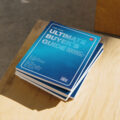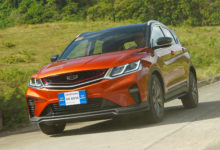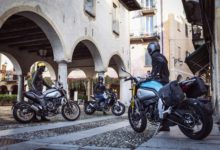Features Mazda Philippines August 31, 2016 By Chris Van Hoven
The Mazda ASEAN Expedition
Are we there yet?

We start with the numbers:
echo adrotate_group(19);4,000 kilometers in 9 days; 150 drivers from 6 countries; a fleet of 16 Mazda vehicles; and 4 border crossings.
It’s an epic undertaking on any scale; born from the initiative of Mazda to promote tourism by highlighting the different cultures that comprise the ASEAN Economic Community, and to showcase the entire Mazda fleet in glorious fashion. The entire trek would prove to be the ultimate road trial for their vehicles, with each car being put to the test as we negotiate through unpredictable weather, irregular road conditions, and a swarm of suicidal motorcycles (more on that later). It’s not every day that a manufacturer is willing to make every aspect of their car measured so thoroughly – from accelerating and braking, to handling and fuel economy. It’s an experience the 6-member Philippine delegation eagerly awaited, especially since the Mazda CX-3, a car unavailable in the Philippines at the time, would be one of the vehicles included in the journey. Suited up and ready to go, we get up bright and early to meet our trusty steeds for the long drive.
echo adrotate_group(2);
Day 1
With the sun barely beginning its rise on the horizon, the participants gather in front of the majestic Royal Plaza in Bangkok, where the statue of King Rama V oversees the cars arranged in dramatic fashion. It’s here that the task is made clear. We are to take the cars through Thailand, crossing through Laos, and into Vietnam, where another group of drivers will take over and drive the cars down through Cambodia and back to Thailand. All in all, four countries are crossed, spanning 4,000 kilometers, where we cover as much as 800 kilometers per day. After some remarks from Mr. Hidesuke Takesue, President of Mazda Sales in Thailand, we begin our journey, full of excitement for what lies ahead.





We’re stuck in traffic. Of course we would be; it’s rush hour after all. There’s a brief moment of panic as some cars take wrong turns. It’s here we realize that placing a bunch of foreigners used to driving left-hand-drive cars in Thailand’s right-hand-drive rush-hour frenzy may have been a mistake. Luckily, the car’s built-in NAV unit (thankfully in English) is up to the task, and the entire convoy eases out into the straight stretch of highway. We’re in the Mazda3 to start off, and the its city-bred characteristics shine through as it deftly handles the long highways with great ease, accelerating through overtaking maneuvers, and effortlessly maintaining speeds around 150 km/h. The rest of the drive is relaxing and invigorating, as the drivers and their passengers enjoy Thailand’s beautiful countryside heading north to the border. After 750 kilometers and 11 hours of driving, we reach the northeastern province of Nakhon Phanom, bordering Laos across the majestic Mekong River.
Day 2
Laos, as it turns out, is a left-hand-drive country – a bit of a problem in our right-hand-drive cars. You can imagine how confusing this would be to Filipino drivers who initially had to adjust to Thailand’s right-hand-drive scheme in the first place. Thailand’s broad freeways turn into two-lane unpaved roads as we cross through each small, barren town. Traversing the twists and turns of the mountain road leading to the Laos-Vietnam border, we find that Laos is charming in its own way, with rustic rural views that transform into lush greenery. Now in the Mazda CX-3, we’re quite surprised at how at home it feels along the twists and turns of the mountain side. Its 2.0-liter Skyactiv engine barely breaks a sweat as we employ some swift accelerating to overtake trucks along the uphill road; and despite being on a raised Mazda2 platform, its agility and nimbleness is remarkable, even comparable to the Mazda2 itself. Thanks to Mazda’s approach to centralizing interior designs and configurations, switching cars feels natural and requires hardly any adjustment. The rest of the drive is fairly straightforward, eventually reaching the immigration facility that would allow us to enter Vietnam.



“What do you mean we’re not getting our passports back?” we overhear a jittery journalist say as the entire fleet of Mazda vehicles waits for their turn to be processed at the Laos-Vietnam border. “Vietnamese police will hold your passports for now, and they will return your passports to you when you check in your hotel”, replies a Mazda representative. Without the security of the single most important document for international travellers, nerves are a little on edge. Anything could happen between the border and our hotel in Hanoi, another 700 kilometers away, and we didn’t have enough potato chips in our car to bribe police if things went wrong. It doesn’t help that the border security are dressed in intimidating Mao Zedong-inspired Zhongshan suits, reminding us of Vietnam’s long and colorful history with China. Secure in our faith that Mazda has everything under control, we cross the border into the Vietnamese city of Vinh, inappropriately blasting the soundtrack of Miss Saigon through our speakers for good measure.

Day 3
Vietnam sure loves their motorcycles. With a population of 90 million people, there are currently over 45 million registered motorcycles in Vietnam, making it one of the largest motorcycle markets in the world. It becomes quickly apparent that when motorcycles vastly outnumber cars, road rules and regulations get thrown out the window. Motorbikes of all shapes and sizes swarm the road as we get closer to Hanoi, weaving in and out of traffic, often straying close enough for us to stick our fingers in their ears. “Don’t be afraid to use your horn!” our guide informs us over the radio. “They will not give way unless you do” he asserts. Thankfully we’re now in the Mazda2, its small dimensions and agile handling characteristics make darting through traffic much easier than it should have been. We use our horn often enough to time each press to the beat of Taylor Swift’s “Shake it off” in its entirety, several times over. Before we exit the city to our last destination, Hanoi City, we make a pit stop at the towering statue of Ho Chi Minh to take some pictures and switch to our final car of the journey: the Mazda CX-5.
Driving over 1,500 kilometers was a walk in the park compared to the last 10-kilometer stretch, as Hanoi’s traffic hit us with full force. Quick changing traffic lights and the unbeatable swarm of motorcycles caused enough confusion to separate the convoy three ways. We could hear the panicked chatter of the marshals over the radio as they frantically tried to organize themselves to get everyone headed in the right direction again. Despite being in the largest car of the Mazda fleet, the CX-5 proved as easy to maneuver as the rest of the lineup through the chaotic streets, with its excellent visibility on all sides allowing us to keep tabs on pedestrians and motorbikes alike. With excellent coordination and perhaps a bit of magic, the marshals eventually get everyone to our last and final stop: Muong Thanh Centre Hotel.



Amidst our celebratory dinner, it’s the words of Steven Tan, President of Mazda Philippines (and as it turns out, awesome road trip companion), that hits us with a stark realization. “Do you guys realize that we had breakfast in Thailand, lunch in Laos, and dinner in Vietnam?” It’s only here that we marvel at the scope of the entire journey. More than just a show of the Mazda lineup’s reliability, power, handling, and comfort, it was a testament to the brand’s commitment to the ASEAN region – proven with the establishment of engine and transmission factories in Thailand, assembly plants in Malaysia and Vietnam, and a solid effort to support sales and after-sales service in Singapore, the Philippines, Indonesia, Malaysia, Laos, Cambodia, Myanmar and Brunei. The following day, a new group consisting of Thai and Vietnamese drivers will take the cars from Hanoi to Ho Chi Minh, Phnom Penh in Cambodia and back to Thailand, which will then conclude the Skyactiv ASEAN Caravan. As we look back on our 1,500 kilometer journey, we can’t help but be envious. They have the drive of their lives ahead of them; and we’d do it all over again in a heartbeat.
































